No Restart for ExxonMobil's California Offshore Platforms as Judge Upholds Tanker Trucks Ban
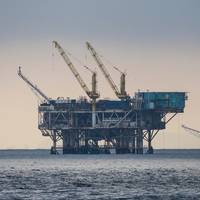
A U.S. judge on Wednesday refused to overturn a California county's decision to block Exxon Mobil Corp from using tanker trucks to ship crude oil from coastal facilities to inland refineries while a ruptured pipeline is fixed.U.S. District Judge Dolly Gee in Los Angeles denied Exxon's bid to reverse the Santa Barbara County Board of Supervisors' denial of a trucking permit in early 2022, saying the board's decision was substantially supported by evidence that transporting crude…
Russian Oil Tanker Bound for Fire-ravaged Cuban Terminal Diverts to Smaller Port

A cargo of Russian oil bound for Cuba's Matanzas terminal has been diverted to a smaller port, following a spectacular fire that destroyed a large portion of the island's main oil terminal, vessel monitoring data showed on Thursday.Lengthy power blackouts have followed the fatal blaze, which killed one firefighter and left 14 others missing. The outages are a sign of how the accident is aggravating a long-standing energy crisis due to an obsolete power grid and lack of fuel.The Liberia-flagged tanker NS Laguna carrying 700…
Sanchi Disaster Probe Ends in Split Verdict
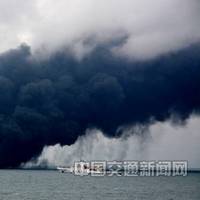
A committee investigating a collision between an Iranian tanker and a Chinese freighter has come to diverging conclusions over the causes of the worst oil ship disaster in decades, Iran's state television reported on Saturday.The Panama-registered Sanchi, run by Iran's top oil shipping operator NITC, collided with the CF Crystal, registered in Hong Kong, off the coast of China near Shanghai and the mouth of the Yangtze River Delta on Jan. 6.The Sanchi sank on Jan. 14 after burning for several days.
Oil from Sunken Tanker Sanchi Reached Japan's Shores
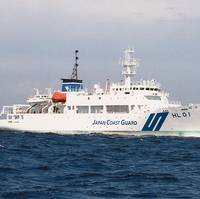
Oil that reached islands in southern Japan earlier this month is highly likely to have come from the sunken Iranian tanker Sanchi, the Japan Coast Guard said on Thursday. Samples of oily matter that washed up on Feb. 8 on the shores of the Okinoerabu and Yoron islands in the Amami chain were found to be linked to the Sanchi's sinking, the Coast Guard said. The Sanchi sank on Jan. 14 after colliding with a freighter on Jan. 6 in the world's worst oil tanker disaster in decades.
Salvage Crews Working to Recover Sanchi's Bunker Fuel
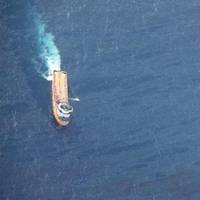
Chinese salvage crews are still trying to remove 1,900 tonnes of bunker fuel, the heavy oil used in ship engines, from a sunken Iranian oil tanker, the Ministry of Transport said on Thursday, almost a month after it collided with a freight ship. If the fuel is not cleaned up, it could pollute the marine environment, the ministry warned in a release. Bunker fuel is noxious to marine organisms and difficult to remove from the ocean once spilled. Five Chinese vessels, and one Japanese ship and one South Korean…
Bodies of Three Sanchi Crew Members Identified

The bodies of three of the crew of the Sanchi, the tanker involved in the worst oil ship disaster in decades off the coast of China, have been identified, the Iranian Students’ News Agency (ISNA) reported Saturday. The three crew members identified are Milad Aravi, Majid Naqian and Mohammad Kavousi, the agency reported. The semi-official Fars news agency said that the three were Iranian. The Iranian government is trying to get the bodies of the three crew members back to Iran, according to ISNA.
China Plans First Lab on Ocean Oil Spill Cleaning
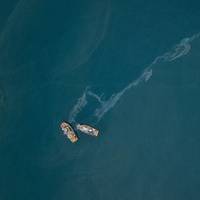
China's Ministry of Transport is planning to establish a laboratory specialising in treating oil spills at sea, the first of its kind in the country, local media Science and Technology Daily reported on Sunday. China is spending some 200 million yuan a year on researches for emergency treatment of oil spills but the technological expertise has not been widely applied because of lack of such a lab, the report said. The laboratory is planned in northern port city of Tianjin, off the Bohai Bay, with an initial investment 400 million yuan ($63 million).
China Agrees to Joint Sanchi Collision Probe
The maritime authorities of China, Panama, Iran and Hong Kong on Thursday signed an agreement to jointly investigate a collision in the East China Sea that caused the worst oil ship disaster in decades, according to China's Ministry of Transport. Investigation work will be organised by a joint team composed of representatives of all four signatories to the agreement, a brief statement from the ministry said. The Panama-registered Sanchi tanker (IMO:9356608), run by Iran's top oil shipping operator, collided on Jan. 6 with the CF Crystal (IMO:9497050) about 160 nautical miles off the coast of China near Shanghai and the mouth of the Yangtze River Delta. The Sanchi, which was sailing from Iran to South Korea, carrying 136,000 tonnes of condensate, an ultra light crude, sank on Jan.
Sanchi's Black Box Opened -Iranian media
The black boxes for the tanker Sanchi and the freighter CF Crystal, the two vessels that collided in the worst oil ship disaster in decades, have been opened, the Iranian Students’ News Agency (ISNA) reported on Wednesday. Officials from China, Iran, and Panama were present when the black boxes were opened, Hadi Haqshenas, maritime affairs deputy at Iran’s Ports and Maritime Organization, was quoted as saying by ISNA. The report did not say where that happened. “Clarifying the ultimate results of the deciphering process takes time and it could take months,” Haqshenas said, according to ISNA. The Sanchi, run by Iran’s top oil shipping operator, collided with the CF Crystal about 160 nautical miles off the coast of China near Shanghai and the mouth of the Yangtze River Delta on Jan.
Panama Says Sunken Iranian Tanker had Papers in Order
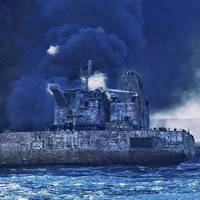
The Iranian tanker that sank after a collision in the East China Sea, causing the worst oil ship disaster in years, had its paperwork in order, according an initial review by maritime authorities in Panama, whose flag it was sailing under. The large tanker Sanchi (IMO:9356608) sank on Sunday after crashing into the freighter CF Crystal (IMO:9497050) and drifting ablaze for days. The ship's crew of 30 Iranians and two Bangladeshis are believed to have been killed. Fernando Solorzano…
China: Sunken Tanker Sanchi May be Leaking HFO
A sunken Iranian oil tanker may be leaking heavy bunker fuel as well as light oil off the east coast of China and the best remedy was to recover the vessel, officials said on Friday. It was unclear how much bunker fuel was left aboard the tanker when it sank on Sunday after being ablaze for days but experts estimated it may have been carrying about 1,000 tonnes at the time of collision. "There have been multiple appearances of oil slicks of different sizes and types at the sinking spot and nearby... the slicks exceeded 200 sq kilometres (77 sq miles) on Thursday," Huo Chuanlin, of the State Oceanic Administration's Ecological Protection Department, told reporters. It was not immediately clear where the oil could wash up or the extent of the damage it could cause.
Oil from Sunken Iranian Tanker Diffusing in East China Sea
Oil from an Iranian tanker that sank in the East China Sea has diffused into four separate slicks, covering a combined area of just over 100 square kms (39 square miles), Chinese authorites said late on Wednesday. Earlier satellite imaging showed two large slicks, with the larger one also thicker and more concentrated, but the latest data had found four slicks ranging in size from 48 square kms (19 square miles) to 5.5 square kms (2.1 square miles), the State Oceanic Administration (SOA) said. The large tanker Sanchi (IMO:9356608) sank in the worst oil ship disaster in decades on Sunday, raising worries about damage to the marine ecosystem. The bodies of two sailors were recovered from the ship while a third body was pulled from the sea near the vessel.
Iranian Tanker Produces 2 Slicks in East China Sea
An Iranian oil tanker that sank in the East China Sea has left two oil slicks covering a combined 109 square km (42 square miles), the Chinese government said, as maritime police scoured for damage and prepared to explore the wreck. Satellite imaging showed a slick of 69 square km (26.6 square miles) and a second 40 square km (15.4 square miles) slick, which is less thick and not as concentrated, the State Oceanic Administration (SOA) said in a statement late on Tuesday. The large tanker Sanchi (IMO:9356608) sank in the worst oil ship disaster in decades on Sunday, raising worries about damage to the marine ecosystem. The bodies of two sailors were recovered from the ship while a third body was pulled from the sea near the vessel. The remaining 29 crew of the ship are presumed dead.
Japan: Little Chance Sanchi Oil Slick Reaches Its Coast
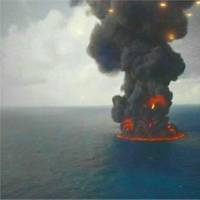
Japan sees little chance of the oil spill from a stricken Iranian tanker that sank on Sunday in the East China Sea reaching its shores, an official at the nation’s environment ministry said on Tuesday. The large tanker Sanchi (IMO:9356608) sank in the worst oil ship disaster in decades and produced a large oil slick, Chinese media and Japanese authorities said on Monday, as worries grew over damage to the marine ecosystem. The vessel’s crew of 30 Iranians and two Bangladeshis are all believed to have perished in the incident.
Stricken Tanker Sinks, Leaves Large Slick in East China Sea
Two bodies, black box recovered from tanker before sinking; Iran says remaining 29 crew, passengers presumed dead. A stricken Iranian tanker that sank in the East China Sea on Sunday in the worst oil ship disaster in decades has produced a large oil slick, Chinese media and Japanese authorities said on Monday, as worries grew over damage to the marine ecosystem. The tanker Sanchi (IMO:9356608) had been adrift and ablaze after crashing into the freighter CF Crystal (IMO:9497050) on Jan. 6. Strong winds had pushed it away from the Chinese coast, where the incident happened, and into Japan's exclusive economic zone (EEZ). The Japan Coast Guard said oil had spread over an area 13 km (8.1 miles) long and 11 km (6.8 miles) wide…
Tanker Continues to Burn in East China Sea
Strong winds, high waves and toxic gases are hindering dozens of rescue boats struggling to locate missing sailors from a stricken oil tanker in the East China Sea and to extinguish a fire that has burned for the past three days on the ship. The poor conditions, with rain and waves as high as 3 metres (10 feet), frustrated efforts to tame the fire and search for the 31 remaining tanker crew members, China's Ministry of Transport said in a statement on Tuesday. The flames were forcing the South Korean Coast Guard's search and rescue team to stay as far as 3 miles (4.8 km) away from the tanker, two South Korean officials told Reuters.
Tech File: Fire Boom for the US' Worst Oil Spill

On April 20, 2010, the Deepwater Horizon mobile offshore drilling platform was destroyed as a result of a catastrophic blowout of the Macondo 252 well in the Gulf of Mexico. The blowout resulted in a continuous discharge of approximately 3.19 million barrels of oil over three months covering approximately 30,000 square miles of the Gulf. It was the worst accidental oil spill in U.S. history. Due to the massive amount of oil being spewed into the Gulf, three aggressive oil removal methods were authorized: mechanical skimming, dispersant application and controlled burns.
Six Years after BP Spill, US Sets New Offshore Oil Safety Rules
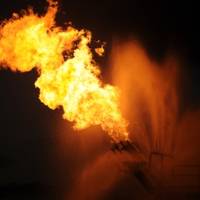
The Obama administration on Thursday unveiled new oil well control rules to prevent the kind of blowout that happened six years ago on a BP Plc rig in the Gulf of Mexico. The Interior Department's Bureau of Safety and Environmental Enforcement announced the finalized regulations, which include more stringent design requirements and operational procedures for offshore U.S. oil and gas operations. The new standards come nearly six years after a deadly explosion and fire on the Deepwater Horizon oil rig off the cost of Louisiana, which led to the worst oil spill of all time.
How Politics Impacts OPA 90 Responder Immunity

Many people today are frustrated with the current U.S. political process as we endure various government stalemates on budgets, Supreme Court appointments, and, of course, the Presidential election. The general theme is voters are angry with the political establishment and, as a result, outsiders like Donald Trump and Bernie Sanders are doing well in the polls. Much of this anger is directed at the influence big money donors and lobbyists have over the process. Thus, Trump who has committed to self-financing his campaign and Sanders…
Sea Urchin Haven Disturbed by Oil Spill
Stephanie Mutz makes a living plucking sea urchins from the Santa Barbara coast and selling the prickly treasure to upscale restaurants in Southern California. Now, she needs new hunting grounds. The coast, thought to be one of the world's best places for harvesting sea urchins, suffered its worst oil spill in 46 years this week, forcing authorities to ban fishing in an area 23 miles (37 km) long by seven miles (11 km) wide. "That was one of my predominant fishing spots, so I just have to think of a Plan B," said Mutz, who supplies restaurants from Santa Barbara to Orange County, including the Michelin-starred Providence in Los Angeles.
Oil Majors Push Offshore Players for 30% Cuts

30%That’s the minimum level of capital expenditure cuts facing owners and operators of offshore rigs, vessels and various support services, as they scramble to keep equipment working and their heads above water during one of the worst oil downturns in 30 years. From a high of $108 per barrel in June of last year, prices plummeted roughly 60% as supply surpassed weakening demand, crashing in November to around $44 a barrel. The pricing collapse caught all sectors of the industry and financial markets by surprise, pulling down with it market valuations, quarterly earnings and day rates.
This Day in U.S. Coast Guard History - March 24
1909- Muskeget, Massachusetts: the schooner Vigilant parted moorings, and stranded one mile south of the station. The owner applied to the keeper at 10:30 p.m. for assistance. Surfmen proceeded to the scene, carried out an anchor and line, and hove the schooner into deep water. During the storm the owner was sheltered and supplied with meals at the station for two days. But for the security afforded by an additional anchor and cable loaned by the crew, Vigilant would have stranded a second time. 1920-The first Coast Guard air station was established at Morehead City, North Carolina. The station was closed on 1 July 1921 due to a lack of funding. 1989- The tanker Exxon Valdez grounded on a reef in Prince William Sound, Alaska, spilling 10.1 million gallons of crude oil.
Nat’l Commission Says: Jones Act No Hinderance to Spill Clean Up
The January 11, 2011 report from the non-partisan National Commission on the BP Deepwater Horizon Oil Spill and Offshore Drilling confirmed the Jones Act did not prevent foreign vessels from assisting with the clean-up effort during the Deep Water Horizon oil spill in the Gulf of Mexico last year. “Deep Water: The Gulf Oil Disaster and the Future of Offshore Drilling” was prepared by the independent entity at the request of President Barack Obama. “While decision makers did decline to purchase some foreign equipment for operational reasons ‒ for example, Dutch vessels that would have taken weeks to outfit and sail to the region, and a Taiwanese super-skimmer that was expensive and highly inefficient in the Gulf ‒ they did not reject foreign ships because of Jones Act restrictions…





